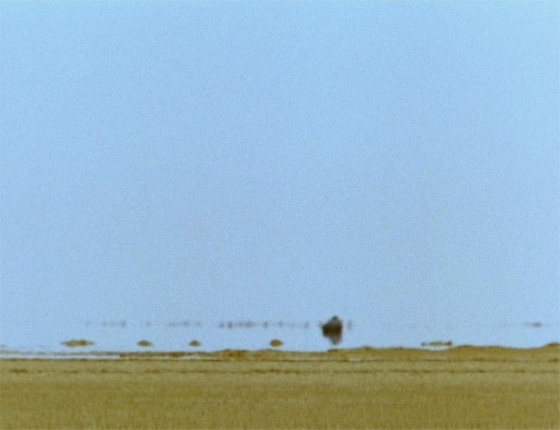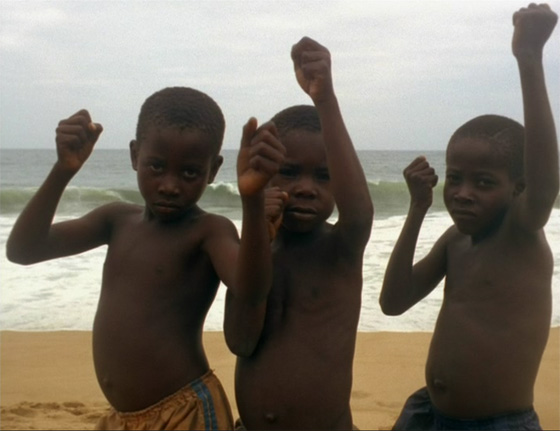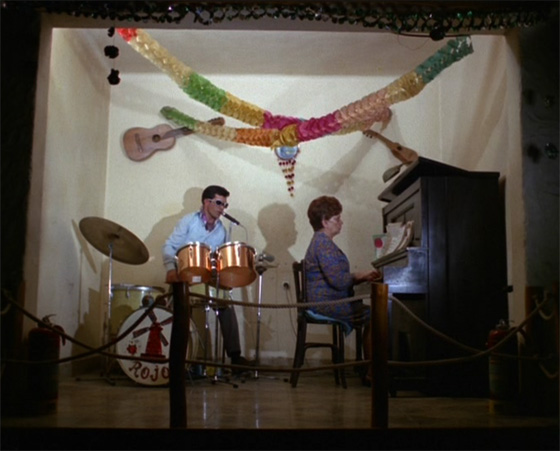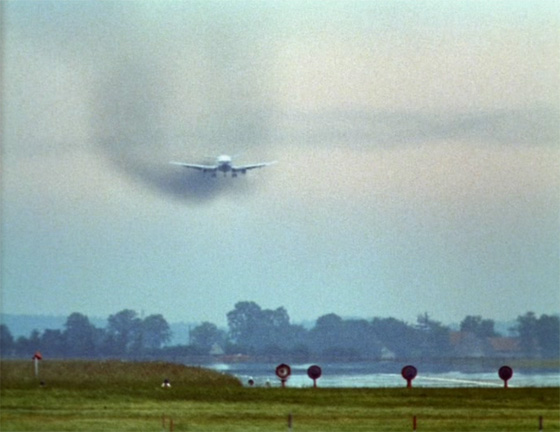
“In Paradise, man is born dead.” So speaks the gruff German narrator of the second movement of Werner Herzog’s apocalyptic travelogue, Fata Morgana (1971). The images support the thesis. This, Herzog’s third full-length feature film, depicts an African landscape littered with the stillborn: decaying animal cadavers, abandoned vehicles, empty hovels and deserted streets. If occasionally he seems to celebrate the country’s people, it may only be by accident. The tragic pall which hangs over so many of his films is very much in evidence in this narrative-free experiment, as he depicts a continent despoiled by Western influence and abandoned by the gods. Also: it’s a documentary. Also: it’s a science fiction film. As a child, Herzog was raised in isolation from pop culture in a remote Bavarian village; as a prolific creator of narrative and documentary films, he continually seeks to view the wide world with the unspoilt eyes of his childhood, imitating nothing, completely original. That’s Fata Morgana…an admittedly obscure entry in his filmography, but one that could emerge from only this director. Shot over the course of a year from 1968 to 1969, Herzog and his small crew traveled the Sahara, the Sahel, Kenya, and stops along the way, encountering uncooperative border guards, severe illness (Herzog came down with schistosomiasis, a parasitic disease prevalent in Africa), and the Cameroon military, who imprisoned and beat Herzog and his cameraman Jörg Schmidt-Reitwein, whom they had confused with a wanted mercenary – an incident Herzog is reluctant to discuss to this day. Returning home, it took him a few years to piece together the seemingly random footage he’d accumulated into a cohesive work; it finally debuted at the 1971 Cannes Film Festival, to little love.

Children strike a pose for Herzog's camera in "Fata Morgana."
The original notion of the film was that it would be a science fiction tale, dispatches from the planet Uxmal as told by explorers from Andromeda. (Herzog still holds to that idea, though he would revisit the cinéma-vérité-as-SF concept more overtly with 1992’s 54-minute Lessons of Darkness, paired with Fata Morgana on the Anchor Bay DVD.) Watching the film without that context – for, indeed, the narrators don’t provide it – you can still get the feel of the alien viewpoint, for Herzog’s camera seems continually baffled by the overwhelming and desolate landscape around him. It moves restlessly, scanning to the left and then to the right, surveying sand dunes, scattered animal corpses and the detritus of civilization, eventually buildings, and finally this land’s occupants: one rolling a giant tire through a street in the distance, another dragging a captive desert animal through the sands by a stick and noose. On the soundtrack, one of Herzog’s first champions, film critic and Nazi death camp survivor Lotte Eisner, reads a Mayan creation myth from the Popol Vuh. (“Popol Vuh” was also the name of the German musical group who scored many of Herzog’s major works of the 70’s and 80’s, including his breakthrough, 1972’s masterful Aguirre, the Wrath of God.) The creation myths being read seem especially appropriate in the film’s earliest scenes, a catalogue of desert mirages – the fata morgana of the title. As the horizon seems to become a blur of sky, earth, and water, we’re treated to a natural, visual representation of an Earth “formless and void.” Over and over, Herzog films planes that seem to join with a landing strip of water, evoking a union of technology and the Creation.

Through muddy, distorting acoustics, a couple perform in a claustrophobic dancehall for Herzog and his crew.
It’s either trippy and mesmerizing, or as dull as watching paint dry, depending on your disposition. Fata Morgana is nothing if not meditative, and the only thing Herzog asks of the viewer is to contemplate the images captured from his African journey. Still, it’s an eccentric assembly of images and sound. As the film moves into its second and third movements – from “Creation” to “Paradise” and “The Golden Age” – Eisner’s Popol Vuh readings, accompanied by the heavenly strains of Handel and Mozart, are traded for the music of Leonard Cohen and Blind Faith, and Herzog’s own absurdist script: “In Paradise, plane wrecks will be distributed in the desert in advance.” We also hear from some of the European inhabitants of this land, who look not only out of place, but like characters from Monty Python. Herzog simply films them and lets them pick their own topic: this one explaining how a lizard can endure the desert wild; another explaining “what we can learn from the turtle,” holding a sea turtle while wearing a diving suit. One couple sits on a stage – the man behind drums, wearing overlarge sunglasses; the woman severely observing her piano – as they pound through songs rendered incoherent by the muddy acoustics. They seem to occupy a dancehall in some alternate dimension. In scenes like these, Herzog demonstrates an affinity with his longtime friend (and friendly rival) Errol Morris, in particular Morris’ early films Gates of Heaven (1978) and Vernon, Florida (1981), which display the absurdity of humanity by simply turning a camera on everyday folks and letting the film roll. Though it doesn’t quite cohere as a concept, there are some pokes at colonialism in Herzog’s method. The Creation has finally given way to civilization, and it’s something he regrets; unless, perhaps, all of these dead animals, oil refineries, nuclear tests, and out-of-tune cabaret players are just more mirages – before the world lapses back into desert and dust. Herzog would explore these ideas more fully in works to come.










